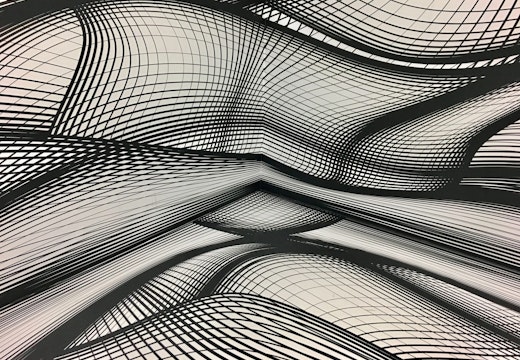Why welcoming workplaces are closely linked to biophilic design
Neuroscience research into the design of hotel lobbies has a lot to tell us about creating a more hospitable workplace where people are happy to spend their time
Making the workplace a welcoming space is a prerequisite for organisational success—happily, there’s been a recent spate of related neuroscience research to guide designers. Significantly, it appears that when hospitality is important, so is biophilic design.
Nanu and Rahman (2023) found that having plants in hotel lobbies was tied to hotel success and it seems likely that their conclusions are also relevant in office lobbies. The research team found that in lobbies with plants there was ‘a significantly higher level of pleasure . . . Having nature in the lobby will not only make the customers spend more time there, but by doing so they will also spend on food and beverages.’
Lee, Tao, Douglas, and Oh (2023) further found that biophilic hotel design enhanced attitudes toward the hotel.
Earthly elements
These studies build on the findings of earlier research into hotel lobbies. Lee (2019), studying the effects of utilising plants, natural light and water, determined that hotels should ‘incorporate earthly elements, water features, and/or natural light in their lobby design. Biophilic design elements elicit positive emotional responses, superior perceived quality, favourable attitude, and positive behavioural intentions.’
A team led by Nanu (2020) studied the preferred hotel lobbies for guests of various ages and found that biophilic design impacted the satisfaction and emotions of guests right across different generations.
A study by Shin, Lee, Min and Legendre (2023) argues for careful management of biophilic elements: ‘Many service and retail facilities, such as hotels, restaurants, hospitals, and airports, are incorporating nature elements into their building design. . . when biophilic attributes are moderately implemented, they can elevate aesthetic and attractiveness perceptions, but this effect tapers off if the implementation is excessive.’
Perceptions of hospitality
Factors such as views into buildings from doorways affect perceptions of hospitality. Pijls and teammates (2023) found that ‘transparency increased the experience of all hospitality factors. . . a building can express hospitality just by having a transparent, visually appealing entrance.’
Another example of hospitality-linked design elements: Yang (2016) learned that in hotels, moderate visual complexity is particularly important when light is a cooler colour. Cool light combined with moderate complexity generates a perception that a space seems to have great value as well as a desire to return to it.
Torres, Fu, and Lehto (2014) found that hotel guests from different parts of the world are particularly attuned to certain aspects of hospitality experiences: Americans, for example, to amenities that make them feel valued; Northern Europeans to design and functionality; Latin Americans to both tangible and intangible elements of experience and particularly food; and Canadians to cleanliness.
It seems that creating welcoming, hospitable workplaces that elevate wellbeing and performance. Can learn a lot from the way hotels are designed.
Read more of the latest research insights from Sally Augustin in Research Roundup, her regular column in the Innovation Zone for WORKTECH Academy members and partners here.
Research sources
Seung Hyun Lee. 2019. ‘Effects of Biophilic Design on Consumer Responses in the Lodging Industry.’ Journal of Hospitality Management, vol. 83, pp. 141-150.
Seung Hyun Lee, C-W. Tao, A. Douglas, and H. Oh. 2023. ‘All that Glitters is Not Green: Impact of Biophilic Designs on Customer Experiential Values.’ Journal of Hospitality and Tourism Research, vol. 47, no. 4, pp. 789-803.
Luana Nanu, Faizan Ali, Katerina Berezina, and Cihan Cobanoglu. 2020. ‘The Effect of Hotel Lobby Design on Booking Intentions: An Intergenerational Examination.’ International Journal of Hospitality Management, vol. 89, 102530.
Nanu and I. Rahman. 2023. ‘The Biophilic Hotel Lobby: Consumer Emotions, Peace of Mind, Willingness to Pay, and Health Consciousness.’ International Journal of Hospitality Management, vol. 113, pp. 1-11.
Pijls, M. Galetzka, B. Groen, and A. Pruyn. 2023. ‘Come In Please: A Virtual Reality Study on Entrance Design Factors Influencing the Experience of Hospitality.’ Journal of Environmental Psychology, vol. 90, pp. 1-10.
Shin, R. Lee, J. Min, and T. Legendre. 2023. ‘Connecting Nature with Luxury Service.’ Psychology and Marketing, vol. 40, no. 2, pp. 300-316.
Edwin Torres, Xiaxiao Fu, and Xinran Lehto. 2014. ‘Examining Key Drivers of Customer Delight in a Hotel Experience: A Cross-Cultural Perspective.’ International Journal of Hospitality Management, vol. 36, pp. 255-262.
Jing Yang. 2016. ‘The Effects of Lighting Temperature and Complexity on Hotel Guests’ Perceived Servicescape, Perceived Value, and Behavioral Intentions.’ Dissertation Abstracts International Section A: Humanities and Social Sciences, vol. 77(2-A(E)), no pagination.








